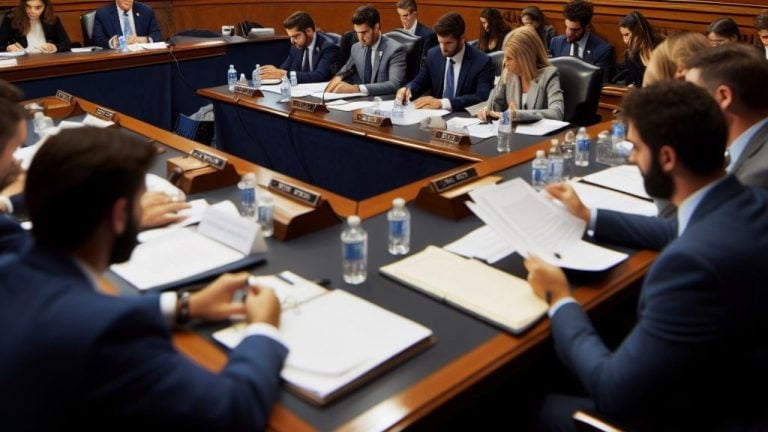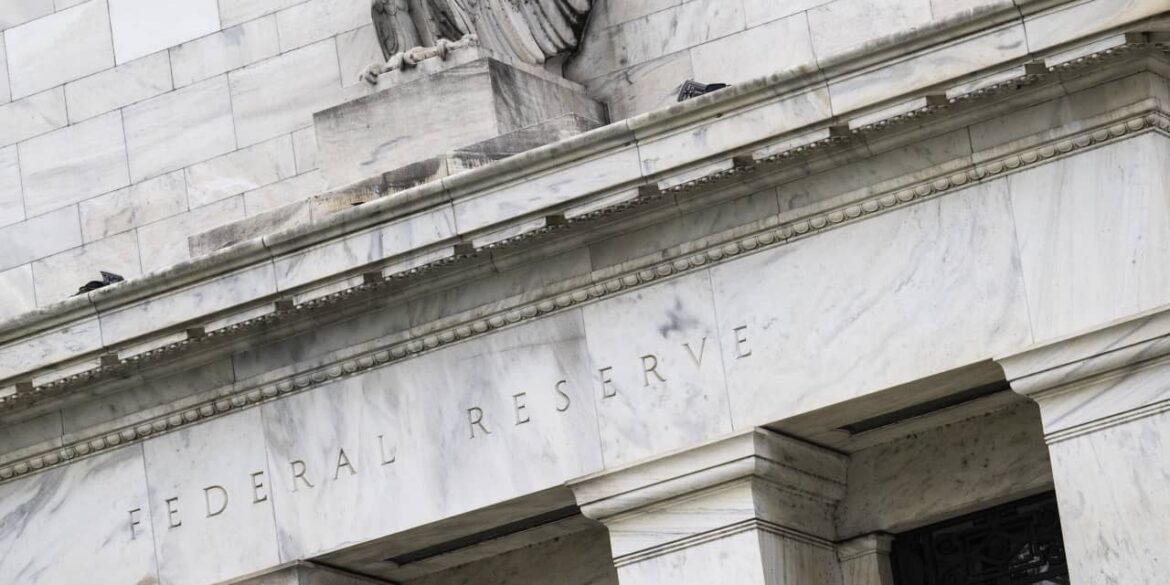 Per the CEO of Hut 8, a bitcoin mining company listed on the Toronto stock exchange, major financial institutions have made inquiries to purchase bitcoin directly from the firm. Additionally, the Hut 8 executive emphasized the forthcoming halving event’s “big impact,” noting a surge in demand juxtaposed with a reduction in available bitcoins. Financial Giants […]
Per the CEO of Hut 8, a bitcoin mining company listed on the Toronto stock exchange, major financial institutions have made inquiries to purchase bitcoin directly from the firm. Additionally, the Hut 8 executive emphasized the forthcoming halving event’s “big impact,” noting a surge in demand juxtaposed with a reduction in available bitcoins. Financial Giants […]
Source link
Banks
XRP holders are facing mixed signals. While the digital asset boasts nearly 20% in gains over the past year, significantly outperforming traditional savings accounts, its recent performance pales in comparison to other cryptocurrencies.
After a substantial decline, the altcoin’s price has now entered a phase of sideways consolidation, making market players unsure of its future course. It appears like the cryptocurrency will likely stay stuck in a narrow range until there is a breakout in either way.
XRP: Beating Savings Accounts
Despite the seemingly negative vibe, a recent report highlighted the coin’s resilience. Specifically, it underscored its advantage over stagnant savings accounts.
XRP hit a low of $0.42 in March 2023 and surged to $0.93 in July, fueled by optimism surrounding the Ripple vs. SEC lawsuit. The coin then saw a rise of 1.30% on Sunday. After losing 1.35% on Saturday, the altcoin gained 0.41% at the end of the week to close at $0.6299. Today, it sits at $0.61, reflecting a 20% year-over-year increase.
This dwarfs the returns offered by most savings accounts. A Business Insider report pegs the average Annual Percentage Yield (APY) for US savings accounts between 0.01% and 0.25%. Even high-yield online banks rarely surpass 5.30% APY.
XRP is up over 6% within a single year, it has outperformed every savings account of every bank in the world and yet you people are still crying about it. pic.twitter.com/GGxVPJfudU
— Mr. Huber🔥🦅🔥 (@Leerzeit) March 29, 2024
“Mr. Huber,” a prominent crypto community investigator, emphasizes this point. To paraphrase his views, he said while XRP might not be setting the crypto world on fire right now, it’s definitely a better option than letting your money languish in a savings account.
However, discontent simmers within the community. Over the past three months, XRP has seen a meager 1% growth, while rivals like Bitcoin and Ethereum have skyrocketed by over 50%. This lackluster performance compared to its peers is causing frustration among holders.
XRP market cap currently at $33.6 billion. Chart: TradingView.com
The future trajectory of XRP hinges on multiple factors. The ongoing Ripple vs. SEC lawsuit, which centers around whether XRP is a security, is a significant cloud hanging over the coin’s price. A favorable outcome could reignite investor confidence and propel XRP upwards.
Diverse Perspectives And Pressure In The Crypto Market
Another factor is the broader cryptocurrency market. If the current bull run continues and other top coins maintain their momentum, XRP might face additional pressure to catch up.
Analysts remain divided on XRP’s short-term prospects. Some believe the current stagnation is a buying opportunity before a potential price surge. Others urge caution, citing the ongoing lawsuit and the unpredictable nature of the cryptocurrency market.
The diverse perspectives surrounding XRP showcase the exciting array of options available to investors. With XRP presenting a compelling alternative to conventional savings methods, its unique features shine through.
Despite recent fluctuations in its performance compared to other digital assets, this opens up opportunities for thoughtful consideration and strategic investment. Ultimately, the choice to embrace XRP hinges on aligning with one’s personal risk appetite and long-term investment objectives, empowering individuals to make informed decisions tailored to their financial aspirations.
Featured image from Karolina Grabowska/Pexels, chart from TradingView
Disclaimer: The article is provided for educational purposes only. It does not represent the opinions of NewsBTC on whether to buy, sell or hold any investments and naturally investing carries risks. You are advised to conduct your own research before making any investment decisions. Use information provided on this website entirely at your own risk.
House Financial Services Committee Advances Bill to Repeal SEC Bulletin Preventing Banks From Offering Crypto Custody Services
 The House Financial Services Committee of the U.S. Congress has advanced a resolution that seeks to disavow SEC SAB 121, a bulletin that leaves banks and financial institutions out of the cryptocurrency custody provider market. However, the resolution, advanced with bipartisan support, is unlikely to be passed at a vote on the House floor, according […]
The House Financial Services Committee of the U.S. Congress has advanced a resolution that seeks to disavow SEC SAB 121, a bulletin that leaves banks and financial institutions out of the cryptocurrency custody provider market. However, the resolution, advanced with bipartisan support, is unlikely to be passed at a vote on the House floor, according […]
Source link

Hungary is advancing a legislative proposal that would enable banks, investment funds, and asset managers to offer services in Bitcoin and other cryptocurrencies, according to a March 1 report by Bloomberg Law.
The initiative marks a significant development in Hungary’s financial sector, aligning with a broader European movement towards the adoption of digital assets.
Should the Hungarian bill be enacted, it would represent a notable step forward in allowing traditional financial institutions to incorporate crypto services. The laws are scheduled to come into force on June 30 if they are approved.
Draft legislation
The draft legislation, proposed by the Hungarian Ministry of Economy, aims to create a regulatory framework for digital assets, with the Hungarian central bank serving as the primary supervisor.
The move is indicative of Hungary’s efforts to comply with the EU’s regulatory standards, including the Markets in Crypto Assets Regulation (MiCA) and stricter anti-money laundering and counter-terrorism financing measures.
According to Norton Rose Fulbright’s 2024 FinTech Outlook, such regulatory developments are part of a wider trend toward recognizing the importance of digital currencies in the financial industry.
The Hungarian bill is seen as a response to the EU’s efforts to harmonize regulations for crypto-assets, as the European Securities and Markets Authority (ESMA) continues to consult on the classification of crypto-assets and the details of reverse solicitation under MiCA.
EU pushing for regulation
Hungary’s legislation reflects a collective European interest in establishing a regulatory framework that is technology-neutral and can integrate crypto into the financial system without compromising security or compliance standards.
This could encourage similar legislative efforts throughout Europe, as countries aim to align with EU directives and foster innovation within their financial sectors.
The potential integration of cryptocurrencies into mainstream financial services suggests a shift in investment patterns, efficiency in transactions, and broader financial inclusion. Such a change could have far-reaching implications for Hungary’s economy and possibly influence the European financial landscape.
The inclusion of cryptocurrencies in the offerings of banks and other financial institutions marks a critical transition toward the future of finance.
This fintech startup is targeting a gap in lending as banks tighten credit

With banks facing higher interest rates that bite into economic activity, not to mention their need to stockpile money for bad debts or unpaid credit-card bills, it has been harder to get a loan in the past year or so.
At least one startup sees an opportunity.
The founders of financial-technology company Nectar told MarketWatch this year’s market conditions are fueling its growth at a time when banks remain more selective with their loans.
“It’s a good time to be in this business because access to capital has dried up,” said Derrick Barker, 36, who co-founded Nectar with his wife, Brittany Mosely, 35.
Also read: New York Community Bancorp led increase in loan-loss reserves by big regional banks as lenders brace for potential downturn
With 92 loan deals and counting since its launch in 2021, Nectar now employs 12 people as a lender to real-estate investors and owners who often build housing for Black Americans and other people of color.
It’s worked on more than $500 million in transactions including apartments, multi-family buildings, single-family rentals, hospitality properties, assisted living facilities and commercial real estate.
Nectar’s success thus far illustrates the alternative ways capital is being provided to individuals and businesses even as banks grow more conservative.
The growth of private credit has pivoted to meet some of this demand, but fintechs such as Nectar are also ramping up.
To be sure, others offer quicker routes to capital than many banks. Capchase Inc., for example, specializes in loans based on annual recurring revenue for software-as-a-service companies in the business-to-business space.
Pipe Technologies Inc. operates a trading platform to connect institutional investors and companies with recurring revenue streams to get financing for growth.
For its part, Nectar saw revenue growth of 750% between 2022 and 2023 by focusing on an underserved part of the market, namely people with $50 million to $500 million in assets, typically in real estate.
“The supply chain for capital is … old, outdated and broken, specifically for people who aren’t large institutions,” Barker told MarketWatch. “We want to fix that. We can provide to those people who are medium-size and smaller who are making an impact with the capital they need, so they can build the housing that needs to be built.”
Nectar’s mezzanine debt deals focus on transactions of less than $5 million, much smaller than the $20 million cutoff from many major banks. The company uses existing assets and cash flow generated by rent and other payments as collateral for the loan. This structure allows real-estate owners to retain more of the equity in their own property than other types of financing.
“We can come in and look at their stabilized cash flow and their properties so they can keep doing the important work that they’re doing, which is creating affordable housing … across the country,” Barker said.
Barker and Mosely met while studying at Harvard University, got married in 2015 and went into different careers. She headed for the retail sector, while Barker worked as a bond trader for Goldman Sachs Group Inc.
GS,
During and after his time at Goldman Sachs, Barker built up his own $450 million real-estate portfolio by buying abandoned apartments and rehabilitating them.
Barker started working to solve the challenge of coming up with working capital and liquidity for real-estate properties with low leverage and positive cash flow, which is the core business of Nectar.
For her part, Mosely had seen property owners giving up equity to investors — the limited partners, or LPs, in a real-estate private-equity fund — to get capital.
“For me, it was about really being on the front lines and doing all the work that it took to acquire the property and actually manage the construction or the rehab and when it came time to sell, the LPs would take most of the profit,” Mosely said. “I felt there had to be a better way to grow without property owners having to give up equity — that was my drive to co-found Nectar.”
Many of Nectar’s lending deals are sub-institutional, and many of them are for housing.
These so-called Class C properties — defined as 30 years old, in fair to poor condition, and in less-desirable locations compared with Class A or Class B buildings — often house a greater proportion of Black Americans and people of color.
“They’re still the places where Black people live. If you look at the Class C apartments, they’re the apartments that more people of color are more likely to live in,” Barker said. “They’re also more likely to be owned
by smaller institutions with less access to [loans]. By providing access to capital, it helps … people who are creating housing for this part of the population.”
Nectar remains well capitalized after lining up venture-capital backing from RareBreed Ventures, J4 Ventures and Asymmetry Ventures. Nectar is also raising a private-equity real-estate fund to generate capital for deals called Nectar Fund 2, which has a $100 million target.
Nectar is able to approve financing in as little as seven days, once all underwriting due diligence has been handed in.
Nowadays, Nectar’s portfolio has a combined leverage below 60%. The company maintains more than 2x coverage for every $1 that’s borrowed.
“We do some detailed and deep underwriting. We get to focus on the cream of the crop,” Barker said. “Just because the loans are smaller doesn’t mean they’re not good.”
Also read: Why small-business loans are a win-win for women-run startups and smaller banks
Opinion: ‘Too big to fail’ was bad enough for the banks. Now we have ‘too many to fail.’

Almost a year after the mini banking crisis in the United States, it is worth revisiting the episode. Was it just a tempest in a teacup? Was there really a systemic threat, or was it just a problem with a few banks? Should the interventions by the U.S. Federal Reserve and Treasury worry or comfort us?
Recall that three mid-size U.S. banks suddenly failed around March 2023. The most prominent was Silicon Valley Bank, which became the second-largest bank failure in U.S. history, after Washington Mutual in 2008. Roughly 90% of the deposits at SVB were uninsured, and uninsured deposits are prone to runs. Making matters worse, SVB had invested significant sums in long-term bonds, the market value of which fell as interest rates rose. When SVB sold some of these holdings to raise funds, the unrealized losses embedded in its bond portfolio started coming to light. A failed equity offering then triggered a classic bank run.
It is convenient to think that these issues were confined to just a few rogue banks. But the problem was systemic.
When the Fed engages in quantitative easing (QE), it buys bonds from financial institutions. Typically, those sellers then deposit the money in their bank, and this results in a large increase in uninsured deposits in the banking system. On the banks’ asset side, there is a corresponding increase in central-bank reserves. This is stable, since reserves are the most liquid asset on the planet and can be used to satisfy any impatient depositors who come for their money. Unfortunately, a number of smaller banks (with less than $50 billion in assets) moved away from this stable position as QE continued.
Historically, smaller U.S. banks financed themselves conservatively, with uninsured demandable deposits accounting for only around 10% of their liabilities. Yet by the time the Fed was done with its pandemic-era QE, these banks’ uninsured demandable deposits exceeded 30% of liabilities. Though that level was still far below SVB’s, these institutions clearly had drunk from the same firehose.
Smaller banks were also more conservative about liquidity in the past. At the outset of QE in late 2008, banks with less than $50 billion in assets had reserves (and other assets that could be used to borrow reserves) that exceeded the uninsured demandable deposits they had issued. By early 2023, however, they had issued runnable claims (in aggregate) that were one and a half times the size of their liquid assets. Instead of holding liquid reserves, their assets were now more weighted toward long-term securities and term lending, including a significant share of commercial real-estate (CRE) loans.
Thus, as the Fed raised interest rates, the economic value of these banks’ assets fell sharply. Some of the fall was hidden by accounting sleight of hand, but SVB’s sudden demise caused investors to scrutinize banks’ balance sheets more carefully. What they saw did not instill confidence. The KBW Nasdaq Bank Index duly fell by over 25%, and deposits started flowing out of a large number of banks, many of which lacked the liquidity to accommodate the sudden outflows. The risk of contagious runs across smaller banks was real, as was the possibly of the problem spreading more widely.
“The Treasury essentially took bank runs off the table, while the Fed provided banks the funds to accommodate the continuing — though no longer panicked — depositor outflows. ”
Importantly, as private money flowed to large banks, very little flowed to small- and medium-size institutions. That is why the authorities had to come to the rescue. Soon after SVB’s demise, the Treasury signaled that no uninsured depositor in small banks would suffer losses in any further bank collapses.
The Fed opened a generous new facility that lent money for up to one year to banks against the par, or face value, of the securities they held on their balance sheets, without adjusting for the erosion in the value of these securities from higher interest rates. And the Federal Home Loan Banks (FHLBanks) — effectively an arm of the U.S. government — increased its lending to stressed banks, with total advances to the banking system having already tripled between March 2022 and March 2023 amid the Fed’s policy tightening. Borrowing by small- and medium-size banks from these official sources skyrocketed.
The Treasury essentially took bank runs off the table, while the Fed provided banks the funds to accommodate the continuing — though no longer panicked — depositor outflows. A potential banking crisis was converted into a slow-burning problem for banks as they recognized and absorbed the losses on their balance sheets.
Just recently, New York Community Bancorp
NYCB,
which bought parts of one of the banks that failed in 2023, reminded us that this process is still underway when it announced large losses. With the Russell microcap index of small companies significantly underperforming the S&P 100 index
OEX
of the largest companies since March 2023, it appears that smaller banks’ troubles have weighed on their traditional clients: small- and medium-size companies.
Where does that leave us? Although the situation could have been much worse if the Treasury and the Fed had not stepped in, the seeming ease with which the panic was arrested allowed public attention to move on. Apart from die-hard libertarians, no one seems to care much about the extent of the intervention that was needed to rescue the smaller banks, nor has there been any broad inquiry into the circumstances that led to the vulnerabilities.
As a result, several questions remain unanswered. To what extent were the seeds of the 2023 banking stress sown by the pandemic-induced monetary stimulus and lax supervision of what banks did with the money? Did advances by the FHLBanks delay failed banks’ efforts to raise capital? Are banks that relied on official backstops after SVB’s failure keeping afloat distressed CRE borrowers, and therefore merely postponing an eventual reckoning?
It is not good for capitalism when those who knowingly take risks — bankers and uninsured depositors, in this case — pay no price when a risk materializes. Despite sweeping banking reforms over the past 15 years, the authorities have once again shown that they are willing to bail out market players if enough of them have taken the same risk.
“Too big to fail” was bad enough, but now we have “too many to fail.” The mini-crisis of March 2023 was much more than a footnote in banking history. We cannot afford to bury it.
Raghuram G. Rajan, a former governor of the Reserve Bank of India, is professor of finance at the University of Chicago Booth School of Business and the author, most recently, of Monetary Policy and Its Unintended Consequences (The MIT Press, 2023). Viral V. Acharya, a former deputy governor of the Reserve Bank of India, is professor of economics at New York University’s Stern School of Business.
This commentary was published with the permission of Project Syndicate — The Danger of Forgetting the 2023 Banking Crisis.
More: Regional-bank bondholders seem unworried by New York Community Bank’s problems
Also read: Recession in 2024? A quarter of economists think it will happen.
Regional-bank bondholders seem unworried by New York Community Bank’s problems
While regional-bank stocks continue to be dragged down by the troubles assailing New York Community Bank, their bonds are holding up — suggesting bondholders view NYCB’s issues as isolated.
NYCB’s
NYCB,
sole traded bond tumbled last week as its stock shed more than 40% of its value after the bank posted a surprise quarterly loss and disclosed trouble with its commercial real-estate loans. The company also slashed its dividend to build up capital to meet regulatory requirements.
The stock is now down almost 60% in the year to date, and its bonds are trading at around 75 cents on the dollar after Moody’s Investors Service downgraded the credit to junk status.
On Thursday, D.A. Davidson downgraded the stock to neutral from buy and said it is trading “untethered from fundamentals.”
Analyst Peter Winter cut his price target for the stock to $5 from $8.50 after the downgrade and the company’s disclosures about a rise in deposits and its plans to hire a new chief risk officer in the near future.
The bank confirmed that both its chief risk office and main audit executive had left the bank, stirring unhappy memories of Silicon Valley Bank and its March 2023 collapse. That bank also had no chief risk officer when it was hit by a run on deposits last year that sent shock waves across the regional-bank sector.
NYCB raised its loan-loss reserves by 790%, or $490 million, in the fourth quarter, the most of any regional bank — although others also made sizeable hikes, as MarketWatch’s Steve Gelsi reported.
The following chart from data-solutions provider BondCliQ Media Services shows how select community-bank bonds have performed over the past two weeks, with NYCB’s floating-rate notes that mature in 2028 showing the most dramatic decline.
Don’t miss: New York Community Bancorp looks to sell rent-regulated commercial real estate after surprise quarterly loss
Those bonds actually rose about 5 basis points on Thursday, as the chart indicates.
NYCB is followed by Valley National Bancorp’s
VLY,
3.0% notes, which mature in June 2031 and have fallen to 78 cents on the dollar. That bank, which operates as Valley Bank, is a regional lender based in Morristown, N.J., with about $61 billion in assets.

Historical price performance of select community-bank bonds.
BondCliQ Media Services
As the chart shows, the bonds of other small lenders have remained steady as the selling of NYCB’s bonds has picked up. These include Western Alliance Bancorp.
WAL,
a Phoenix-based lender with $70.9 billion in assets as of Dec. 31.; Zions Bancorp N.A.
ZION,
a Salt Lake City-based bank with $87.2 billion in assets; First National Bank of Pennsylvania
FNB,
a Pittsburgh-based lender traded as F.N.B. Corp. with $34.74 billion in assets; and Webster Financial Corp.
WBS,
a Stamford, Conn.-based lender with $74.95 billion in assets.
The bonds have also seen net buying over the past two weeks, even as the drama at NYCB has unfolded.

Bonds of select community banks’ two-week net client flows.
BondCliQ Media Services
The bond market “seems to think this is an isolated problem and there’s no contagion,” one market source told MarketWatch.
The SPDR S&P Regional Banking ETF
KRE,
an exchange-traded fund tracking the sector, was down 0.3% on Thursday and has fallen 11% in the year to date, while the S&P 500
SPX
has gained 4.6%.
Is $203 Trillion In Derivatives Held By Goldman Sachs, JPMorgan And Other Top Banks Causing an ‘Everything Bubble?’

The scale of derivatives held by major banks like JPMorgan Chase & Co., Citibank and Goldman Sachs, amounting to $203 trillion, has raised concerns about the potential risks these positions might pose to the global economy. The third-quarter Quarterly Report on Bank Trading and Derivatives Activities, published by the Office of the Comptroller of Currency, provides a comprehensive dive into this issue.
This figure surpasses the world’s gross domestic product (GDP) by roughly double, highlighting the enormity of the market.
JPMorgan Chase, in particular, is noted for its substantial exposure to derivatives risk, topping the list with roughly $58 trillion in derivatives. The mounting scale of derivatives owned by banks raises several questions and concerns among regulators and investors.
Don’t Miss:
The 15-digit number has recently drawn speculation among retail investors on social media platforms like Reddit and TikTok. But as recently as March 9, 2023, Congress held a hearing on managing volatility in global commodity derivatives markets.
A derivative is a contract that derives its value from the performance of an underlying entity. This underlying entity can be an asset, index or interest rate. Derivatives can be used to offset risks in the future or used as leverage to increase gains or losses.
But it’s unlikely the banks are the ones holding these derivatives. Rather, many of the top banks act as market makers for entities buying and selling derivatives.
While these banks have large derivative positions on their balance sheets, the notional value is a fraction of the total derivatives market. This is because there are typically two sides to every trade: a short and a long. Because each side has a bullish and bearish position, the total size of the derivatives market doesn’t necessarily correlate to risk.
Trending: Copy and paste Mark Cuban’s startup investment strategy according to his colorful portfolio.
According to the Federal Reserve, the total long exposure for financial derivatives for hedge funds, for example, has remained largely unchanged since being tracked in 2012. There was a large spike between 2017 and 2018, but as the total derivatives market size increased, the notional value slowly approached 0. Hedge funds have a total long exposure of about $1 trillion.
The banks likely don’t hold exposure to most of these individual positions. They are market makers for these transactions and largely facilitate the transactions between parties. Those parties often use the derivatives market to manage risk by hedging their bets or using swaps to limit future exposure.
This isn’t to say there isn’t significant market exposure to derivatives. By all metrics, the use of derivatives is increasing. Between the first quarter of 2022 and the third quarter of 2023, the notional amounts of derivatives increased by about $10 trillion. If an entity mismanages its risks and becomes too exposed to derivatives, there could be risks associated with those trades. But regulatory measures like the Dodd-Frank Act and higher capital requirements imposed by the Federal Reserve are regularly used to mitigate such risks.
A larger concern is the lack of reporting and availability of data surrounding the derivatives market. For example, a recent BIS article highlighted the growing trillions in missing debt created by certain derivatives. Forex swaps, forwards and currency swaps create debts that don’t appear on balance sheets and most debt statistics. Swaps such as these are an underlying common denominator for many financial crises and shocks to the system, causing entities to fail or creating funding squeezes. These off-sheet debts are estimated to be at a staggering $97 trillion globally across all currencies and growing fast.
The lack of reporting for these debts makes it difficult to predict future recessions and make policy regulating derivatives.
The $203 trillion in derivatives held by major banks underscores a complex financial landscape where the interplay of risk management and market speculation is pivotal. While banks often act as intermediaries rather than principal holders, the sheer size of these positions raises questions about systemic risk and market stability.
Regulatory frameworks and reporting standards, although improved, still face challenges in fully capturing the nuances of the derivatives market. The need for enhanced transparency and oversight in the sector remains critical, particularly in light of the growing off-balance-sheet debts that continue to elude conventional monitoring mechanisms.
Read Next:
“ACTIVE INVESTORS’ SECRET WEAPON” Supercharge Your Stock Market Game with the #1 “news & everything else” trading tool: Benzinga Pro – Click here to start Your 14-Day Trial Now!
Get the latest stock analysis from Benzinga?
This article Is $203 Trillion In Derivatives Held By Goldman Sachs, JPMorgan And Other Top Banks Causing an ‘Everything Bubble?’ originally appeared on Benzinga.com
© 2024 Benzinga.com. Benzinga does not provide investment advice. All rights reserved.
Arthur Hayes believes big banks will make stablecoin issuers like Tether obsolete

Big banks are poised to enter and potentially dominate the stablecoin market, overshadowing current leaders like Tether, according to former BitMEX co-founder Arthur Hayes.
In a recent interview with Unchained’s Laura Shin, Hayes said that centralized stablecoins have found a lucrative niche due to the reluctance of traditional banks to engage in similar activities.
However, he foresees a possible disruption, as banks might eventually enter the market with their own digital currencies. Hayes predicted that once banks recognize the profit potential in this domain, they will quickly move to dominate it, leveraging their existing infrastructure and customer trust.
Existential threat for stablecoin issuers
Hayes observed that despite Tether’s success in establishing itself as a leading fiat-collateralized stablecoin, the fundamental business model it employs is one that traditional banks could easily adopt and potentially excel in.
Hayes said that centralized stablecoins like Tether have thrived due to a gap left by traditional banking systems.
Tether, for instance, generates significant profits by exploiting interest rate differentials between dollar deposits and U.S. treasury bills, a business model that banks have refused to engage in due to political or regulatory constraints.
According to Hayes:
“[Stablecoin issuers] don’t have any defensible business because they use banks to custody their funds, which allows them to trade debt instruments.”
However, Hayes predicts a shift where major banks could launch their digital currencies, potentially rendering services like Tether obsolete.
He said that once banks are given the green light to engage with the digital assets sector, they have the necessary comprehensive financial networks and regulatory compliance frameworks to hit the ground running.
He speculated that if banks like JP Morgan Chase were to launch their own stablecoin, they could easily leverage their established reputations and global reach to quickly gain a significant market share, thereby impacting the dominance of current providers such as Tether.
Bitcoin and AI
The conversation also touched on the role of Bitcoin (BTC) as the preferred currency for AI. Hayes argued that money, at its core, is a form of energy transformation.
In his view, Bitcoin, being a direct product of energy expenditure (through mining), represents the purest form of monetary energy. This makes it uniquely suited for AI systems, which prioritize efficient energy management and operate in a purely computational realm.
Hayes further elaborated that AI systems, in their quest for efficiency and autonomy, would naturally gravitate towards a currency that embodies these principles. Bitcoin, with its decentralized, energy-based foundation, fits this criterion perfectly.
Banks are increasingly tapping a Fed facility set up after SVB’s collapse
Usage of a new Federal Reserve facility set up in the wake of the collapse of SVB Financial is starting to pick up after months of little change.
The Bank Term Funding Program allows banks to borrow for up to one year by pledging collateral at par even when they’re trading at a loss, and it has seen week-over-week gains since the autumn. What’s more, the pick-up in the facility coincides with a few recent spikes in the Secured Overnight Financing Rate.
“So, there’s definitely some evidence that banks are getting short on cash, and they’re having to pay more to get it,” says Moses Sternstein, who wrote about the phenomenon in his Random Walk blog.
He speculates the reason has less to do with the lagged effects of the Federal Reserve interest-rate hike campaign and more with the increased borrowing from the Treasury Department.

“All that cash flying to Treasury leaves less and less for everyone else,” he writes.
There could be a seasonal impact as well. Ryan Plantz at Nomura, who commented on the spikes in the SOFR rate, noted signs of deteriorating liquidity and tighter funding into the year end.
An ETF tracking the regional banks, the SPDR S&P Regional Banking ETF
KRE,
has surged over the last month, rising 17%, though it’s still down 11% year-to-date.










